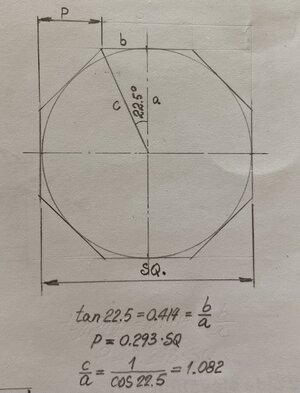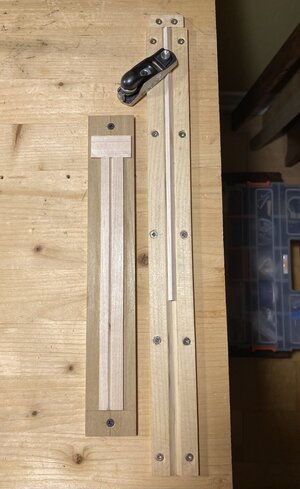Over in Dan Vadas build on MSW he says, "Construction starts by marking out the tapers using the 7-10-7 method." I haven't run across this before. Can anyone explain the 7-10-7 method to me?
You are using an out of date browser. It may not display this or other websites correctly.
You should upgrade or use an alternative browser.
You should upgrade or use an alternative browser.
I pulled this off MSW website If it helps.
 modelshipworld.com
modelshipworld.com
Seven-Ten-Seven (7-10-7) template for making masts from square stock
I know I have uploaded this in the past. But I have recently had several requests for this template and folks couldnt find it. So here it is again in its own easier to search topic. seventenseven.pdf
 modelshipworld.com
modelshipworld.com
Thanks Olivier. I was sure I'd searched MSW since I saw it on Dan's build. I bet I searched 7-10-7 rather than seven-ten-seven. Computers buffalo me.
Ah, I see how that works. Pretty neat. The 10 represents the full size of a flat of an octagon. The 7 represents the view of a same size side at a 45 degree angle (the sine of 45 degrees is .707 or roughly 7 on a scale of 10). So it's a layout of the side view of an octagon, showing the edges. In making the round mast, you first take a square shape and make an octagonal shape, then sand it to round, like this:
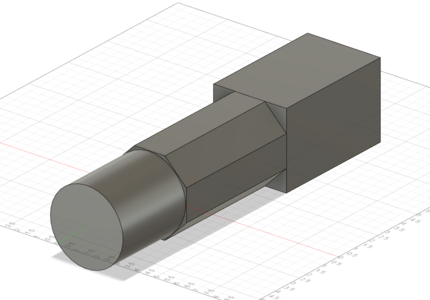
To make the octagonal shape, the 7-10-7 method would lay out lines on each side representing the vertices of the octagon on each side of the square. Basically dividing the mast size at that pointy by 24 (7+10+7), and multiplying by 7 to give the dimension from each edge to the vertex. From the side it looks like this:
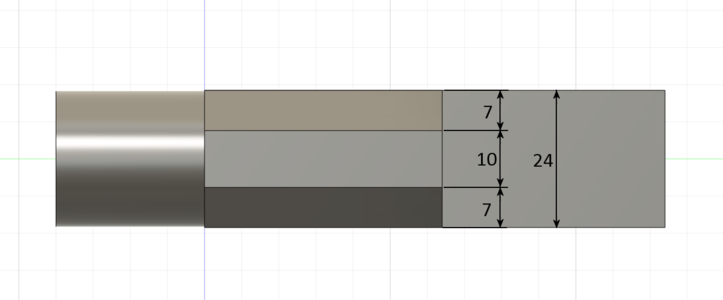
The template shown in the link above simply draws 4 lines, separated by the ratio of 7-10-7 from a larger size to a point, so you can place a square stock along the line until the outer area matches, then mark each side with the vertex locations, to assist in making the octagon.
I hope this helps clear it up and provides some insight on how it came about.

To make the octagonal shape, the 7-10-7 method would lay out lines on each side representing the vertices of the octagon on each side of the square. Basically dividing the mast size at that pointy by 24 (7+10+7), and multiplying by 7 to give the dimension from each edge to the vertex. From the side it looks like this:

The template shown in the link above simply draws 4 lines, separated by the ratio of 7-10-7 from a larger size to a point, so you can place a square stock along the line until the outer area matches, then mark each side with the vertex locations, to assist in making the octagon.
I hope this helps clear it up and provides some insight on how it came about.
Ahh. I got it. The template is used to helping avoid using a calculator.
- Joined
- Jul 27, 2021
- Messages
- 216
- Points
- 253

Instead of a template a little tool can build 

cheers
Dirk

cheers
Dirk
I just run a small plane down the corners until it looks right  . It's not rocket science. I thought it may have to do with how much of the yard was tapered. Like "7" is tapered, "10" is not and "7" is tapered. That didn't seem right so I questioned it.
. It's not rocket science. I thought it may have to do with how much of the yard was tapered. Like "7" is tapered, "10" is not and "7" is tapered. That didn't seem right so I questioned it.
Hey. This is ingenious!! I will for sure make the ne like that. Marking with pencil is so difficult. Here you kill two birds...Instead of a template a little tool can build
Is this tool commercially available?Instead of a template a little tool can build

cheers
Dirk
Just a suggestion: Due to the round pins at each end, this took cannot be completely accurate (but certainly close enough). To minimize the errors, keep the outside pins as small as reasonable, and measure the 7-10-7 distance /between/ the pins, not on the pin centers. The closer to parallel to the mast the tool gets, the larger the error. For example, with pins equal in diameter to 1/10 the distance between them (not to the centers), the error gets to about 12% of the distance at 60 degrees. Fine for our purposes, I'm sure, just though you might want to know about it.Hey. This is ingenious!! I will for sure make the ne like that. Marking with pencil is so difficult. Here you kill two birds...
Just for giggles:
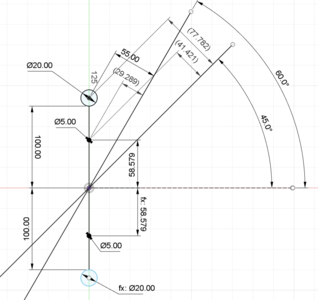
- Joined
- Jul 27, 2021
- Messages
- 216
- Points
- 253

No, but it's easy to buildIs this tool commercially available?
cobbled together jig
Hi, John. What is this jig?? Could you elaborate?
Y.T.,Hi, John. What is this jig?? Could you elaborate?
It is the spar shaping jig that is part of the MS Norwegian Sailing Pram (NSP) kit. It is just a smaller version of what you posted and was purpose-built for the mast constructed as part of the kit. The jig holds square stock at 45° and it is then shaved down to create an octagonal shape. The mast is made from two pieces of wood that are pre-marked (I'm sure the markings are based on the 7-10-7 principle; thanks to this thread I now have a better understanding of how masts go from square stock to round). The jig is long enough for the NSP mast as well as anything shorter; I used the jig (which is still in one of my tool boxes) to help shape oars for one of my boat projects (I just eye-balled going from square to octagonal; no science involved).
The attached photo is from the Norwegian Sailing Pram instruction manual.
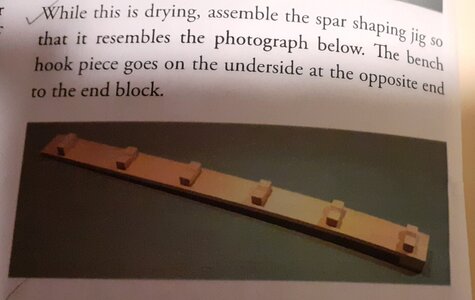
I think that when you are dealing with 1/4" stock, trying to measure and mark it out into three accurate parts is going to be well beyond my measuring/marking abilities. I think eyeballing it is more in line with my abilities. And the eyeball is really the final check anyway, isn't it?




